This page contains affiliate links. Please read our disclosure for more info.
In the deep south of Italy, in the heel of the country’s boot, is the region of Puglia.
We first visited years ago and fell in love with its sleepy whitewashed villages, unique trulli (conical stone huts) amongst a sea of olive trees, endless plates of vegetarian-friendly antipasti, and the crystal clear sea.
We couldn’t get those gooey balls of burrata cheese and labyrinth towns out of our heads and we’ve since returned multiple times. Puglia had just as much impact on us during repeat visits.
Instead of just following the well-worn Venice-Florence-Rome route when you visit Italy, we encourage you to head further south and explore Puglia.
Why visit Puglia? Here are some compelling reasons:
1) Avoid the Crowds
We love Tuscany and Venice and Rome, but these rightfully popular tourist destinations can get very crowded.
It has always been a summer destination for Italians who flock to the beautiful Puglia beaches in August, but foreigners have only begun visiting in recent years.
Tourism may be growing but you’ll still find far fewer visitors here than in other parts of the country, so you can navigate the streets without fighting through tour groups and you’ll benefit from lower prices.
It’s also the ideal destination to practice your Italian. Not many people speak fluent English and they are very supportive of your attempts to speak Italian and are happy for you to fumble along.
2) Food
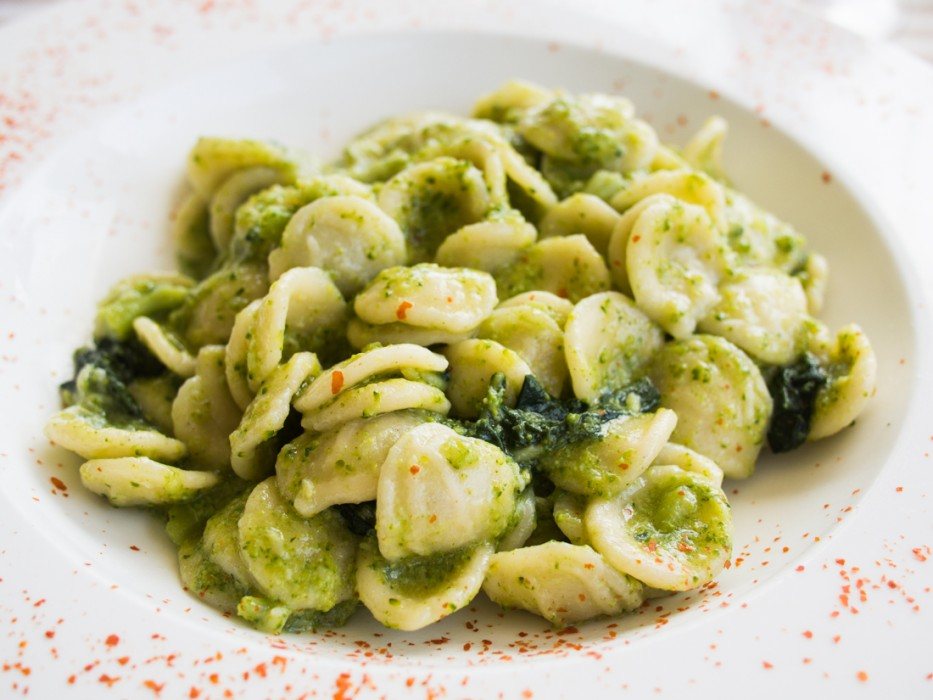
Puglia food is our favourite in Italy, and as a country we visit regularly just to eat, that’s saying a lot.
It’s the most vegetarian-friendly part of the country because of its history of poverty—as locals couldn’t afford meat they developed an innovative use of vegetables.
As one of the most sunny and fertile areas of Italy the vegetables served are seasonal, fresh, and bursting with flavour.
The antipasti stand out for us. Platters of marinated and grilled vegetables, cheeses like the wonderfully oozy burrata, and other tasty treats are served as a starter but are often enough for a meal.
But that won’t stop your host serving you three more courses, including a big plate of orecchiette (little ears) pasta, painstakingly made by hand.
3) People
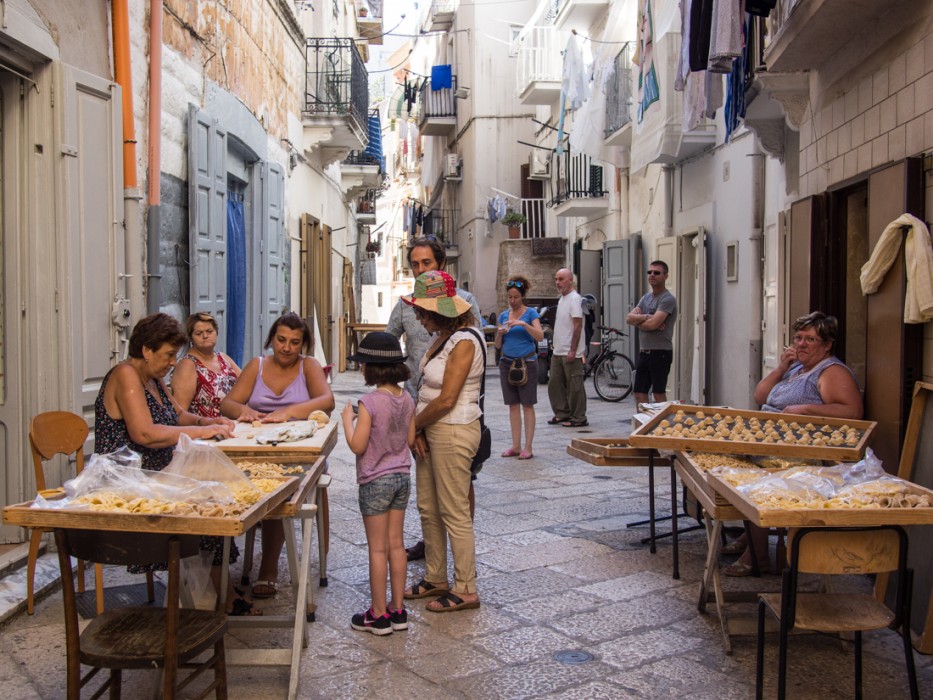
Things move at a slower pace in the steamy south and people will always make time for you. It’s the warmth of the people that stays with us the most.
The welcoming hosts at the masserie (farmhouses) where we stayed who invited us to dinner with their friends; the bubbly enthusiasm of our teacher at a cooking class in Lecce, keen to teach us about local cuisine; our guide whose passion for the region’s history made even us appreciate churches; the youthful vendor at Ostuni market who not only didn’t mind us taking photos and asking questions but happily gave us free samples.
Everyone we met was welcoming and proud of their region, keen to teach us about it and help us however they could.
4) Beautiful Towns
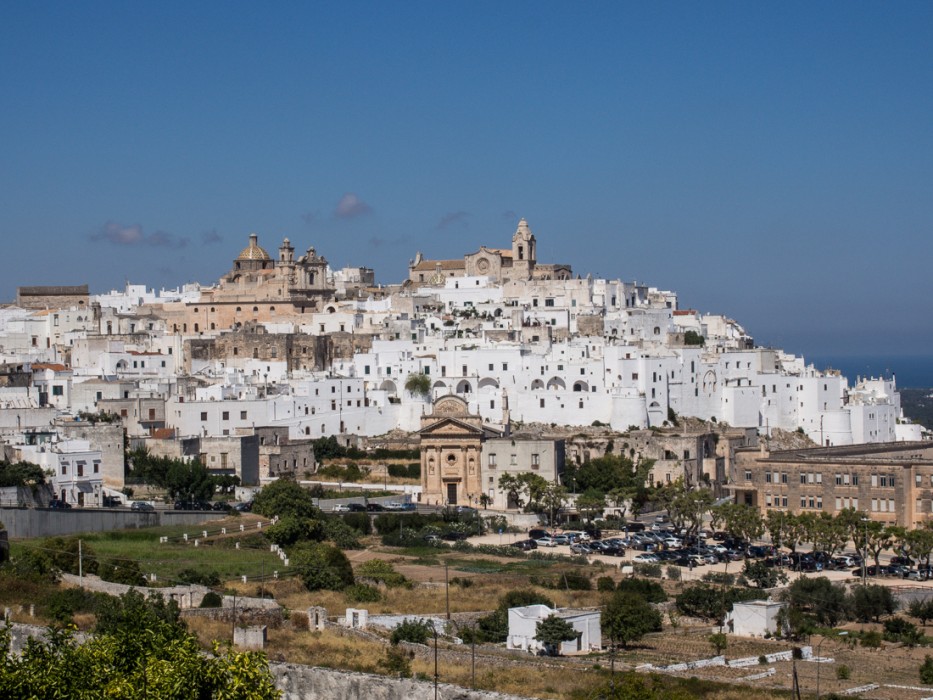
Puglia has plenty of gorgeous towns ideal for aimless wandering including the hobbit-like trulli of Alberobello, the labyrinth whitewashed streets of Locorotondo and Ostuni, the elegant seaside towns of Otranto and Gallipolli, and the golden ornate baroque of Lecce.
Everywhere you’ll find cobbled streets, balconies adorned with pink and red geraniums, stalls overflowing with cherry tomatoes, peaches, and bunches of bright red chiles, hidden piazzas, and many many churches dating back centuries.
Outside of busy August none of the towns are overcrowded and it’s easy to find a quiet alleyway to get lost in.
Check out our guide to the best Puglia towns.
5) Wine
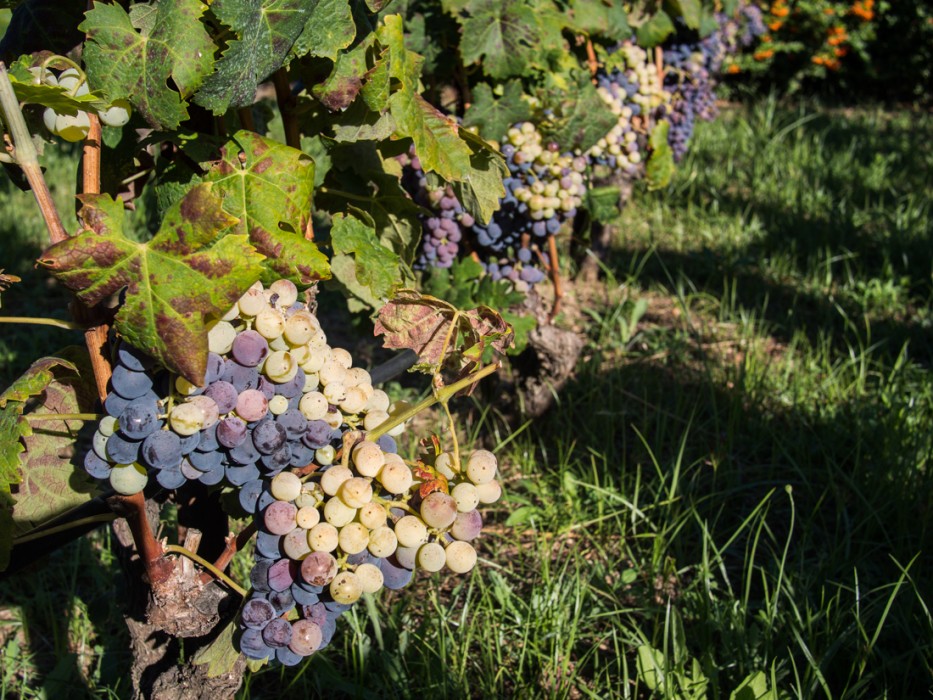
It might not be as well-known as Tuscan wine but Puglia produces 20% of the wine made in Italy.
In the past it didn’t have a good reputation as high quality wine but that’s changed in the last few decades and there are now many wineries that rival those of North Italy.
Salice Salentino and Primitivo red wines are most known internationally but there is much more to Puglian wines—as Italy’s longest region the wine produced is very varied.
We visited the Rivera winery run by three generations of the De Corato family who were pioneers in raising the quality of local wines in the 1950s.
At their winery near Castel del Monte we toured the impressive cellars which combine historic buildings with efficient modern techniques, and tasted some of their wines.
We particularly enjoyed the rosé wines in Puglia, perfect with lunch on a hot day, and the Pungirosa at Rivera was especially good, made from the native bombino nero grapes, unusual because amongst the bunches of purple grapes some stay green.
We also loved Il Falcone, a full-bodied ruby red made with a mix of a local variety Nero di Troia and Montepulciano.
6) Olive Oil
Puglia is a mostly flat landscape and everywhere you look you see olive trees.
The Valle d’Itria in the centre of the region has the highest concentration of olive trees in Italy, and one of the highest in the world—there are 60 million of them.
Even more impressive many of the trees are over a thousand years old, one is even known to be 2700 years old, and they are still producing olive oil.
We visited a 2000-year-old olive tree and tasted the amazing oil during our stay at the organic olive farm Masseria Il Frantoio.
Of course, the excellent olive oil is liberally applied to most local dishes and we can’t get enough of the green tinged liquid gold.
7) History
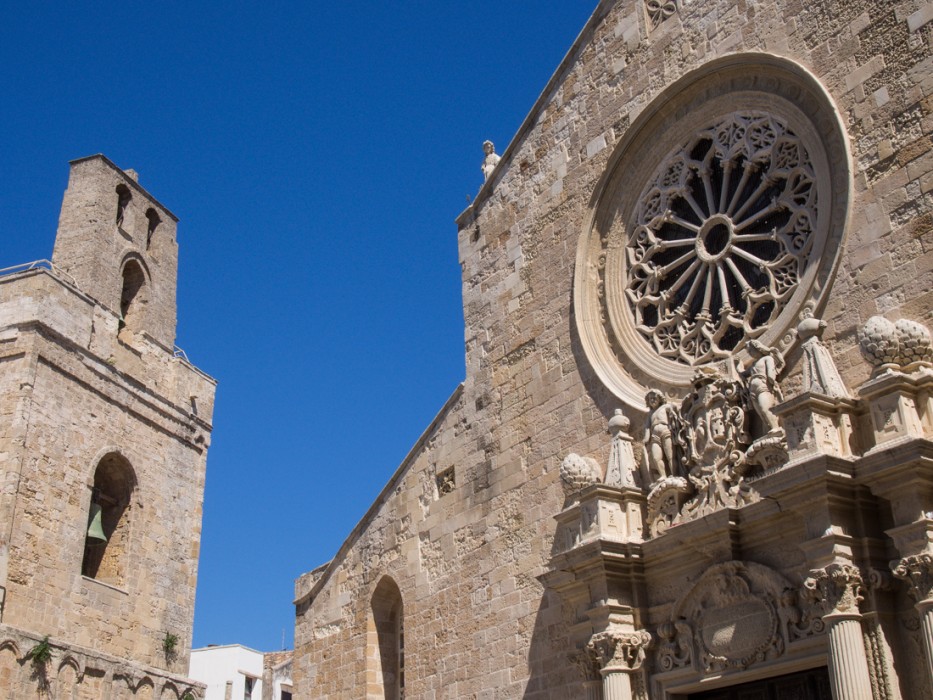
Puglia’s strategic position in the Mediterranean between the east and the west has meant a turbulent history of invasions.
The resulting influences from the Greeks, Romans, Byzantines, Normans, Turks and Spanish are still evident in the region.
You’ll find Romanesque churches, medieval castles, 12th century mosaic floors, 17th century underground olive oil mills, and exuberant Baroque cathedrals.
8) Traditions

Every region in Italy has a strong identity and in Puglia we particularly felt the local pride, not only on a regional level but every area and even town has its own food and traditions.
This felt especially strong in the Salento peninsula at the very bottom of the region, where many dishes we ate were described not as Pugliese but Salentino, or even specific to a particular town.
The Salento also has the interesting tradition of the Grecìa Salentino, an area of 11 towns where Greek traditions from immigrants many years ago are still kept alive.
You’ll find them in the language Griko, a dialect based on Old Greek which is still spoken by older generations, in the food, and in pizzica, a folk dance accompanied by frenetic tambourine.
9) Masserie
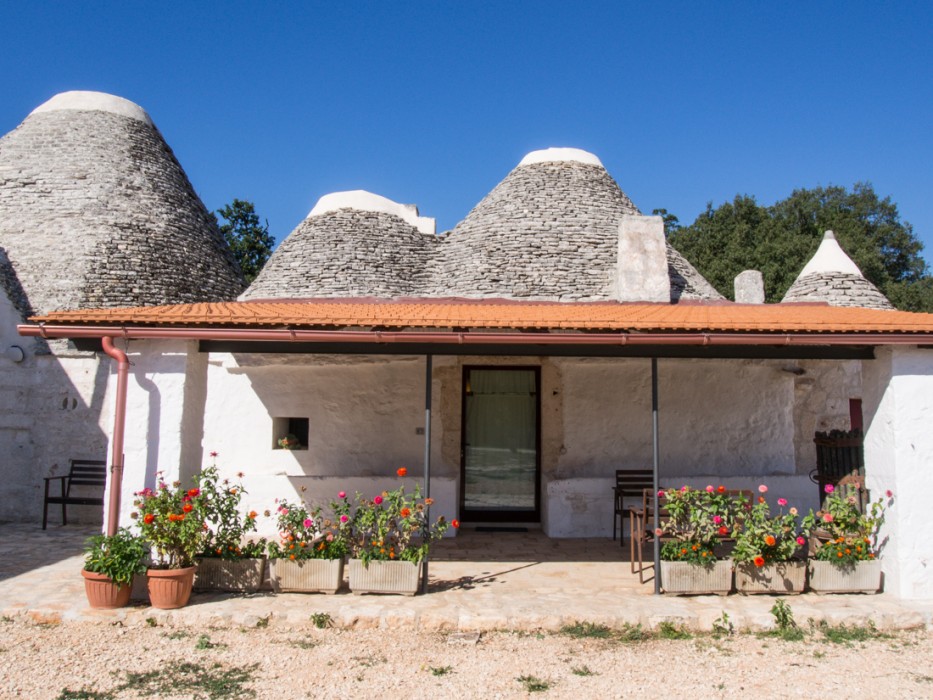
The highlight of our stay in Puglia was the opportunity to stay in masserie, or fortified farmhouses that offer guest accommodation.
It’s fascinating to be able to stay on working farms that produce their own olive oil, wine, vegetables and cheeses, and to meet the owners who often join guests for long home-cooked dinners made using products from the farms.
Accommodation ranges from simple apartments to luxury suites and even trulli (the iconic circular stone huts), and most are in peaceful settings in the countryside.
You’ll need a car and some can be difficult to find but it’s worth it for such a unique experience and the opportunity to enjoy the warm hospitality of Puglian people.
Our favourite masseria is olive farm Masseria Il Frantoio near Ostuni.
10) Sea & Sun
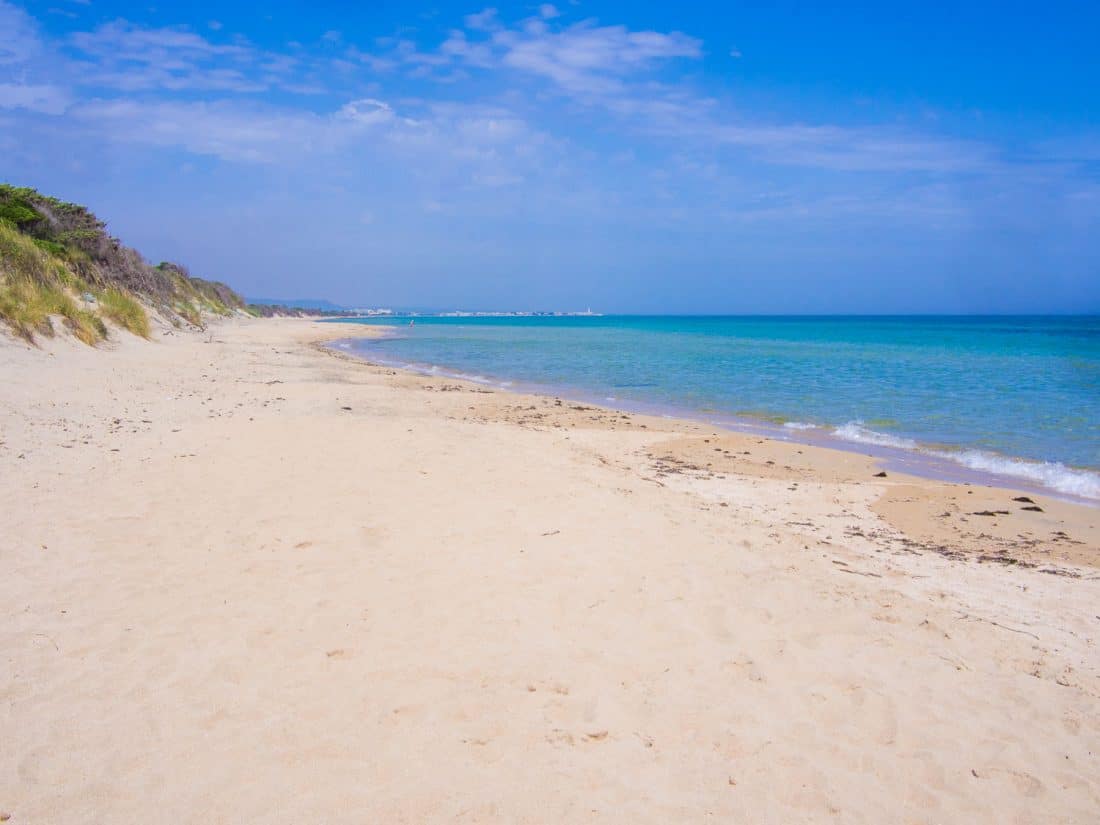
Puglia has 800 kms of coastline and some of the best beaches in Italy with powdery sand and crystal clear water.
Even towns like Otranto and Gallipolli have lovely beaches in the centre with inviting shallow turquoise water.
The beaches get crowded in summer, but because Puglia has warmer weather than northern Italy, you can visit off-season and still swim in the sea well into October.
See our post on the best places to visit in Puglia for more details on this wonderful region.
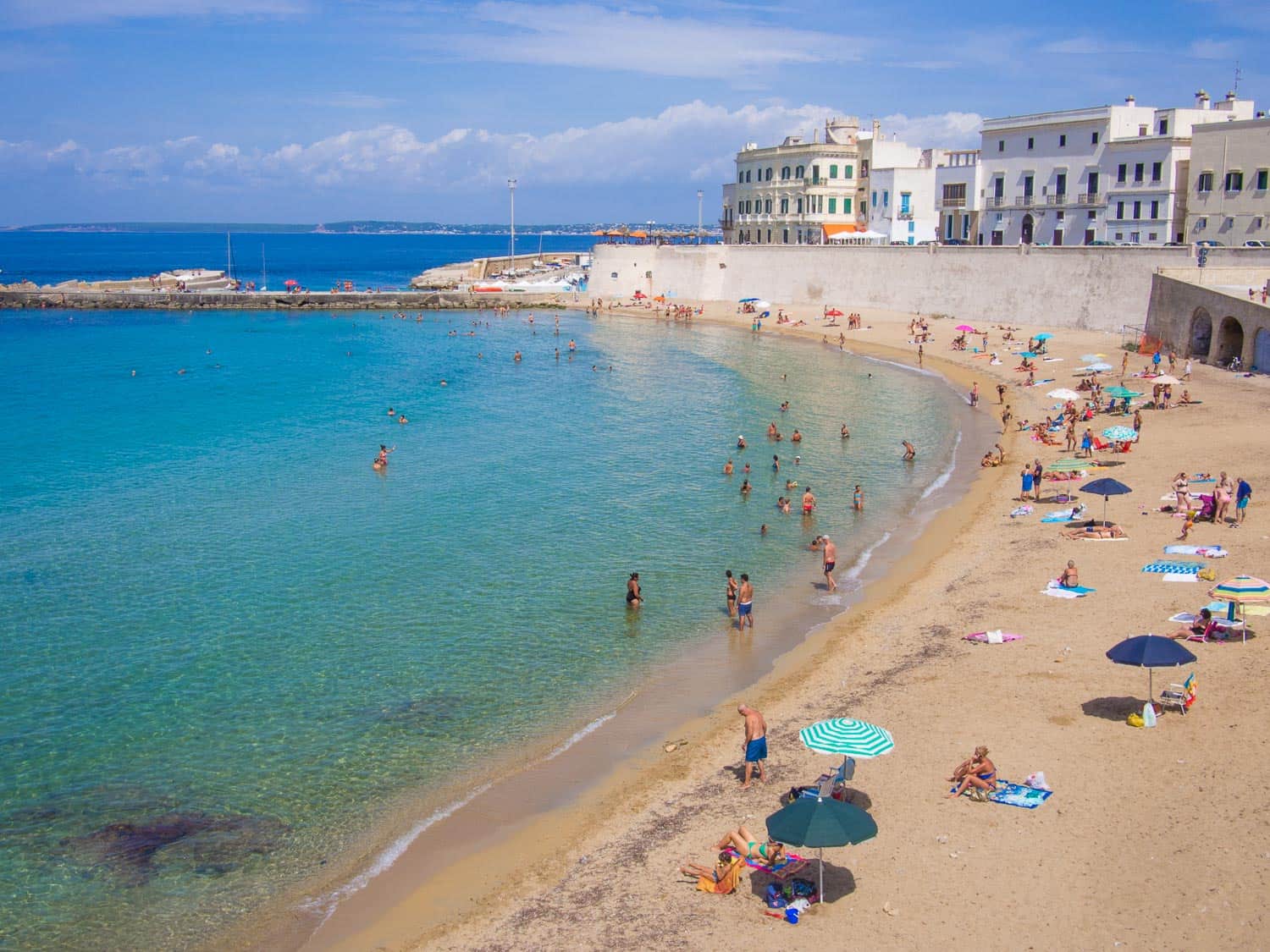
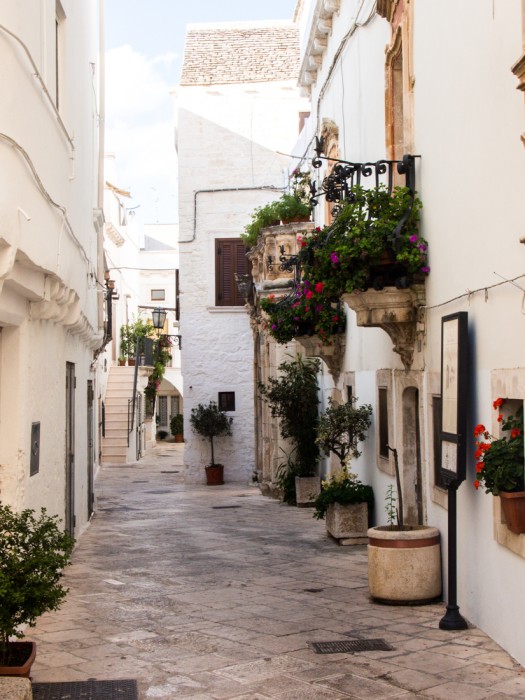
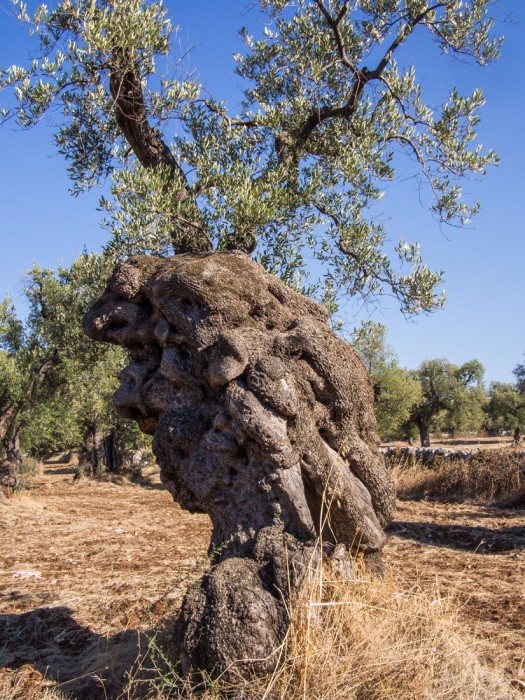
Have you been to the region in early October? Curious your thoughts!
The latest we’ve been is mid September but I would definitely go in early October. It’ll be a lot quieter but should still be warm and sunny.
Hello Erin, Your blogs are excellent and informative. Love the photos and clarity. Thank you for your previous tips about traveling to Puglia. We are in Puglia for 4 nights, Calabria for 1 night and Taormina for 5 nights, from August 25-Sept 5. With that said, I can still change the hotel reservations to adjust a better schedule. My husband’s family is in the small town of Tomaini in Calabria. Any thoughts or recommendations of where to eat or what to do?
Do you have any suggestions for activities that combine bicycling, hiking or sailing?
Is there a private bicycle tour to a winery or olive oil factory or burrata cheese making place where we could bike for 4 to 6 hours? We also thought about sailing if this is a possibility one day. We just returned from Iceland and have seen many volcanoes so I don’t think we want to do another volcano hike. Any guide recommendations would be great.
Lastly, we plan to rent a car in Bari. Should we drop it off in Calabria or can we take it on the ferry to Taormina? We fly out of Catania to Rome then to USA. How pricey are the rentals and drop off charges? Do we need a car in Taormina?
I understand it is hot weather during the summer months and curious if it is too hot to bicycle ride for 4 to 6 hours.
Thank you for your expertise and help!
We haven’t done a bike tour but here’s a company that looks good: https://maderabike.com/ – You could also ask your accommodation in Puglia for any recommendations and look on sites like GetYourGuide and Viator (for all sorts of tours).
I haven’t been to Calabria so can’t advise much on that area/route to Sicily. I imagine it’d be cheaper to drop off the car on the mainland. I don’t think you’d need a car in Taormina. You can compare rental rates with different drop off locations on sites like Kayak and Rental Cars.
Good luck and enjoy Italy! Erin
Thanks Erin
Looking forward to your report on travel by public transport.
We have re-jigged our plans and will skip Naples. Train Rome to Foggia, overnight in Foggia, train to Trani – 3 nights with day trips to Barletta and Castel del Monte. Train to Bari 3 nights in Bari with day trips to Castellana Grotte and Conservano. I am still trying find a train to Monopoli and Polignano e Mare. Then train to Alberobello – overnight then train to Martina Franca – 3 nights with day trips to Locorotondo, Cisternino and Ceglie Messapica. Then somehow (?) to Ostuni – 2 nights with day trip to San Vito Normanni and somehow to Brindisi (can do the day trip to San Vito Normanni from here?)1 or 2 nights in Brindisi (downtime) and train to Lecce – 3 or 4 nights with day trips to Otranto and Gallipoli. Train to Taranto via Manduria and Francavilla Fontana (I think). Two nights in Taranto with day trip to Massafra. Train to Matera 3 nights with day trips to Gravina in Puglia and Altamura. Train back to Bari (overnight) Train back to Rome 3 nights in Trastevere. Return to Melbourne.
Great articles on Puglia
We are planning a trip for 3.5 weeks in October. Hopefully the weather will still be reasonable although we will take coats for the evenings.
Originally we planned Rome – Naples (7 days) then train to Matera (3-4 days) – train to Taranto, train to Lecce and then make our way back up the coast to Bari returning to Rome for 4 days.
However, looking at the things to see and do and my own research for the original trip we were to take in 2013, I think it is best if we gave Naples a pass on this trip and train directly Rome to Bari and take the circular trip from there ending in Matera – train back to Bari and then to Rome. While we know a car will give us much more flexibility, the insurance and parking in Italy has put us off. We had a car when we were first in Italy in the 70s and then again in Sicily 2 years ago – the latter put us off driving in Italy again. Is the public transport to such places as Arbarbello easy to manage?
I would skip Naples (it’s our least favourite place in Italy, except for the pizza :) ) and focus on the other places as you outlined. You can manage with public transport, but it will be slower. I’ve heard Martina Franca is a good base in the Valle d’Itria area for travelling by train—you can visit Alberobello, Locorotondo and Cisternino from there.
There are two train lines (you can get the timetables here): https://www.fseonline.it/ and http://www.trenitalia.com/
We are actually back in Puglia now and will be doing research next month on travelling by train (we’ve always had a car in the past), so I’ll report back!
I’m from Puglia and can confirm all the 10 points are good ones. I would only add COLORS: light blu sky, red field, green trees, mixed color flowers, white houses, etc.
After living 12 years far away, we recently decided to go back and enjoy it all year long :-)
Such a wealth of information you have provided, thank you. Traveling to Pulgia next April for three weeks and can’t decide where to stay week 3. First week is Castro Marina, then possibly Monopolies, then? Any suggestions? I am leaning towards Umbria.
We love Umbria but it’s quite far from Puglia. If you haven’t been to Matera we highly recommend it and it’s close to Puglia: http://www.neverendingvoyage.com/sassi-matera-italy/
I wish i could live there…Puglia has been my dream for a long time….Just amazing !
Awesome post – thanks for all the pointers! One question for you: We will be in Puglia from April 21 – 28, and travelling with a 1 and 3 year old. Ideally, we could station at 2 different locations, for about 3 days each, and then do various day trips (we will have a car). If you had to pick 2 towns that would offer enough to do in the evenings, but allow for short day trips in between, could you recommend a couple? In looking at a map, maybe a “Lecce area” and an “Ostuni area” would allow us to cover good ground? We are going for the food, wine, and sightseeing, and are flexible in terms of flying into Bari or Brindisi. Many thanks!!
I would choose Ostuni and Lecce. Either of the airports would work. Have a great trip!
Puglia certainly appeals. What are your thoughts about travelling here for the last week of June? Would we find restaurants and castles etc closed ‘out of season’? Sea temps warm enough to swim?? Thanks!
I don’t think it would be out of season at all then. I haven’t swum at that time – I imagine it would be chilly but doable. In general, June is a lovely time for Italy and preferable to July and August when things get busy.
Thank you! Probably our dates are the last week of June, so we might be lucky with the swimming temperature! We’re keen over about 8 days to stay in an apartment in the Salento area, and also have the wonderful sounding farmhouse experience you recommend. Is it best to not self cater in the masserie/ working farm environment, as we would love to eat with the local family at least once – or can we achieve a mix of both? Love fresh home-grown delicious food and wine. Recommendations for a masserie in the Val D’Itria for two couples not used to crowds?? I love your never ending blogs. Fabulous!
Great article and so true. Here now and amazing, unbroken sunshine, stunning beaches and what isn’t mentioned is the breakfast cakes! Heading from Gallipoli to Matera today. Awesome.
Great write up and awesome pics…
My fiancé and I are going to Italy for our honeymoon and interested in the Puglia region. We are total opposites when it comes to traveling. She likes the well known tourist locations and Im all about going off the beaten path. Your post sold me on the trip but would like to know if you think 3 nights is enough time to visit Puglia. We’re flying into Rome for 2 days then shooting straight to Puglia then ending our trip in the Amalfi coast for 4 nights. Any advice would gladly be appreciated. : )
Longer would be better but if you focus on one (or two if nearby) towns you should be fine. Have a great trip!
Great article and great tips. All amazing reasons to visit Puglia
I really wish I could have visited Italy when I was in Europe last year. Beautiful shots!
I definitely agree with all the points! Was in Puglia last summer and if I could recommend any south destination of Europe for holiday, Puglia is on the top of the list.
The beauty of unique landscape, food and people is just outstanding!
Puglia looks great. I’ve been meaning to get to the south of Italy, and Puglia seems like a great place to start. I’ll put it on my list for 2014!
Puglia looks absolutely amazing. The last time I was in Italy I didn’t make it farther South than Naples. Definitely on my list of places to visit in Italy, great post!
Great write up and beautiful photos! I would love to visit this place!